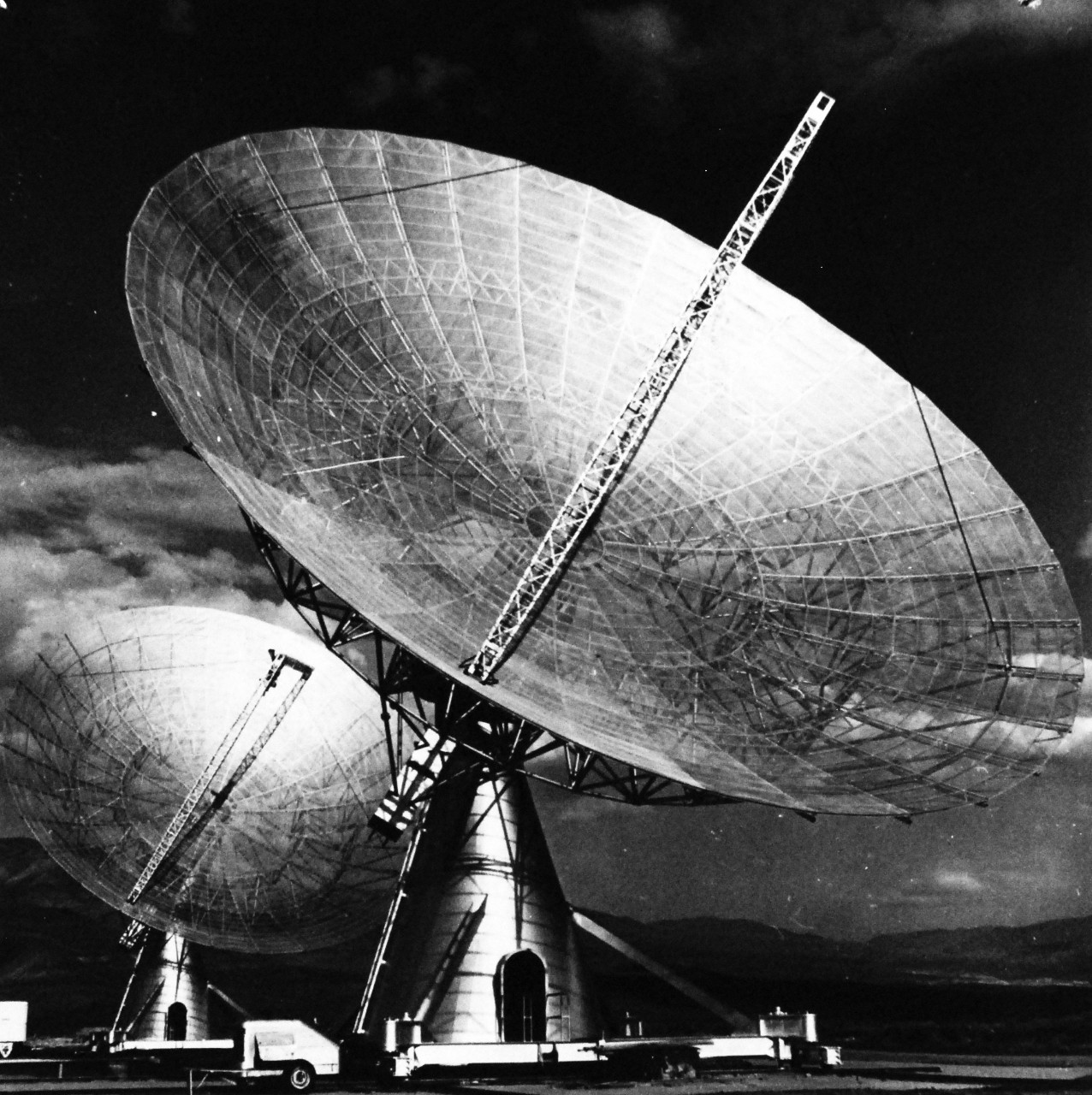Caption:
USN 710653: U.S. Navy Telescope Locates New Radio Sources in Space, March 1960. Nine Radio sources from outside our galaxy have been located in the first two months of operation of a new Navy twin radio telescope. Up to the end of 1959, when the Navy telescope went into full operation, only five other radio sources of the more than 100 detected outside the Milky Way had been precisely located and identified by all the radio telescopes of the world. The giant instrument was built by and is operated by the California Institute of Technology under contract with the Office of Naval Research as part of the Navy’s Radio Astronomy program. Located in a valley 259 miles from Los Angeles, the radio telescope consists of two 90-foot parabola antennas mounted on a 1600-foot long railroad track running east-west. Working in tandem, the twin dishes produce a resolving power (i.e. ability to pinpoint radiating objects in space separated by small angular distances). Greater than any known radio telescope in operation or under construction. Currently, the radio telescope is being used to try to identify other radio sources in space. The twin dishes can also be used to study planets and other large celestial bodies. Two planets can be studied at the same time by using such each dish independently. The new radio telescope may also be use in resolving the conflict of opinion as to whether the planet Jupiter is surrounded by a corona or by a Van Allen type radiation belt. Photograph released 22 March 1960. Official. U.S. Navy Photograph, now in the collections of the National Archives.




